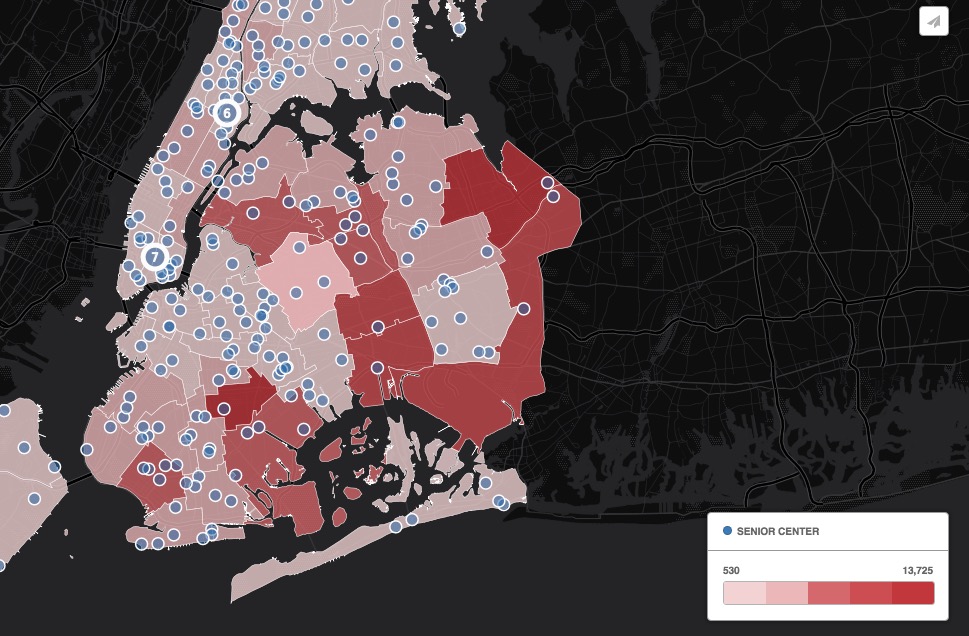A report from the Center for an Urban Future breaks down the demographics of senior citizens in New York and raises the question of how to pay for their care as their ranks continue to swell.
According to “The Aging Apple: Older Immigrants a Rising Share of New York’s Seniors,” immigrants now make up nearly 50 percent of the city’s senior population. Immigrant seniors tend to have lower income and less participation in social services than their native-born counterparts, and 60 percent of them have trouble communicating in English.
The report notes that the de Blasio administration has increased funding for the city’s Department for the Aging, but that the increases only return funding to 2008 levels.
The report also comes with a treasure trove of maps to help flesh out where populations who most need assistance are, and how they’re served.
As the Baby Boomer and immigrant populations age, they’ll change the economy with them. We would expect startups to be increasingly focused on healthcare and other issues associated with aging. In fact, this year’s Blue Ridge Labs summer fellowship is about building tech solutions for New York’s aging population.
Some interesting facts from the report:
- Although the graying of the population is happening across the country, New York City is unique in that the growth in the senior population is being driven almost entirely by the increase in immigration since 1965.
- for the first time since the end of World War II, the share of older New Yorkers who were born outside of the U.S. reached 49.5 percent — nearly equal to the native-born share.
- Brooklyn experienced the most dramatic change over the past five years. In that borough the population of immigrant seniors increased 30 percent while the native-born senior population decreased 4 percent.
- Seniors from Russia and the former Soviet bloc experience a poverty rate of 42 percent — the highest of any group.
- East Flatbush in Brooklyn (CD 17) had the greatest increase in that borough, with a 35 percent increase in the overall senior population, an 85 percent increase in the older immigrant population, and a 34 percent decrease in the native-born senior population.
- The average age at which a senior immigrant from the Middle East arrived in the U.S. is 28, and the average senior from Italy arrived at age 26, meaning that they have spent most of their working lives in this country. In contrast, the average senior from Russia and the former Soviet Union arrived at age 49, the highest of any country or region of origin group. Not far behind are seniors from China and India, who arrived at age 46 on average.
- The median income of immigrant seniors citywide is now $10,800.
- 33 percent of older immigrants do not receive Social Security benefits.
Join the conversation!
Find news, events, jobs and people who share your interests on Technical.ly's open community Slack
